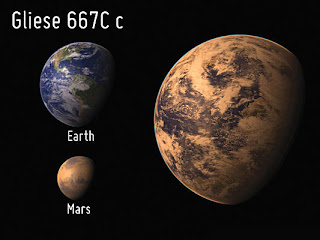 |
| (I am not the professional who assembled and painted this) |
It may not be long before ships like this well-known beauty become a reality. Okay, okay, so we're still a long way from warp drive (or any equivalent), but the light/time barrier is not what we're here to discuss today (that will come another time). But what other type of propulsion do Star Trek ships use? This one may be harder to guess if you're not a Trekkie. The answer is: Impulse Drive. Star Trek's famous Warp Drive is used for faster-than-light (FTL) travel. But for sub-light speeds, Star Trek ships used what they called "Impulse Drive" and it is this marvelous piece of technology that may actually be ours in the near future. And before you say, "Well, they just borrowed the name because it sounds cool," let me tell you, it is actually going to work like the Star Trek one. Dilithium crystals and all.
Basically, the University of Alabama-Huntsville has teamed up with NASA, Boeing, and the Oak Ridge National Laboratory to bring you what they are calling, "Nuclear Fusion Impulse Rocket Engines." According to team member Ross Cortez, "The fusion fuel we're focusing on is deuterium [a stable isotope of hydrogen] and Li6 [a stable isotope of the metal lithium] in a crystal structure. That's basically dilithium crystals we're using." Now, the team has no delusions here. This is not warp drive. This early impulse drive won't even come close to the speed of light (C). In fact, achieving C is impossible according to Einsteinian Relativity, though some scientists believe we may be able to "skip" C and go right into FTL. But that's all theoretical, and has nothing to do with impulse drive, so we'll not spend anymore time on FTL. As previously stated, this impulse drive won't get us anywhere near C, but it will get us from Earth to Mars in about three months of travel time (which is twice as fast as the other major experimental propulsion: nuclear fission). And the best part: the plan is to have a functioning impulse drive by 2030!
Just think of it! In about 17 or 18 years time, we could have a viable means of getting a manned mission to Mars in reasonable time. If the impulse drive works, we could experience in 2031 what others experienced in 1969: live transmission from a human setting foot on an alien world! With this in mind, it is not unthinkable that the average person could make a trip to Mars by the early 2040s. Especially with the advent of private space-flight companies. Mars could be the practice arena for extraterrestrial colonization. Think about it! We've detected habitable worlds like Zarmina's World and Gl 667Cc, but they're over 20 light years away. Even with impulse drive that's a multi-generational journey. Mars is the only habitable world within easy reach. And in a couple of decades we could be sending colonists from Earth to Mars in less time than it took early colonists to get from England to America! We could cross the gulf of space that lies between these two worlds quicker than those 450 years previous could cross that Atlantic Ocean that lay between the two worlds of their time. Isn't that an exciting prospect? Mars is almost within reach!
I think I shall devote my next post to the Red Planet, in light of this news. And then I shall resume discussion of habitable exoplanets.
Sources:











